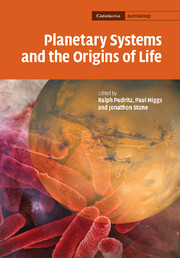Book contents
- Frontmatter
- Contents
- List of contributors
- Preface
- Part I Planetary systems and the origins of life
- Part II Life on Earth
- Part III Life in the Solar System?
- 12 The search for life on Mars
- 13 Life in the dark dune spots of Mars: a testable hypothesis
- 14 Titan: a new astrobiological vision from the Cassini–Huygens data
- 15 Europa, the ocean moon: tides, permeable ice, and life
- Index
13 - Life in the dark dune spots of Mars: a testable hypothesis
Published online by Cambridge University Press: 13 August 2009
- Frontmatter
- Contents
- List of contributors
- Preface
- Part I Planetary systems and the origins of life
- Part II Life on Earth
- Part III Life in the Solar System?
- 12 The search for life on Mars
- 13 Life in the dark dune spots of Mars: a testable hypothesis
- 14 Titan: a new astrobiological vision from the Cassini–Huygens data
- 15 Europa, the ocean moon: tides, permeable ice, and life
- Index
Summary
Introduction
This chapter presents one of the very rare exobiological hypotheses. The main thesis is that there could be life in the dark dune spots (DDSs) of the southern polar region of Mars, at latitudes between –60° and –80°. The spots have a characteristic annual morphological cycle and it is suspected that liquid water forms in them every year. We propose that a consortium of simple organisms (similar to bacteria) comes to life each year, driven by sunlight absorbed by the photosynthetic members of the consortium. A crucial feature of the proposed habitat is that life processes take place only under the cover of water ice/frost/snow. By the time this frost disappears from the dunes, the putative microbes, named Mars surface organisms (MSOs) must revert to a dormant state. The hypothesis has been worked out in considerable detail, it has not been convincingly refuted so far, and it is certainly testable by available scientific methods. We survey some of the history of, the logic behind, the testable predictions of, and the main challenges to the DDS-MSO hypothesis.
History
The spots in question were observed on images made by the Mars orbiter camera (MOC) on board the Mars Global Surveyor (MGS) spacecraft between 1998 and 1999 (images are credited to NASA/JPL/Malin Space Science Systems). These features appear in the southern and northern polar regions of the planet in the spring, and range in diameter from a few dozen to a few hundred metres.
- Type
- Chapter
- Information
- Planetary Systems and the Origins of Life , pp. 241 - 262Publisher: Cambridge University PressPrint publication year: 2007
- 4
- Cited by



